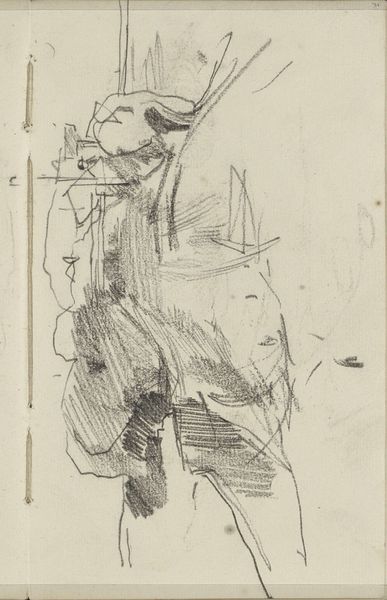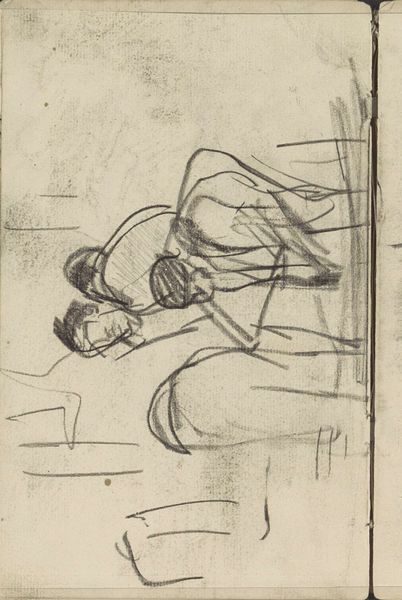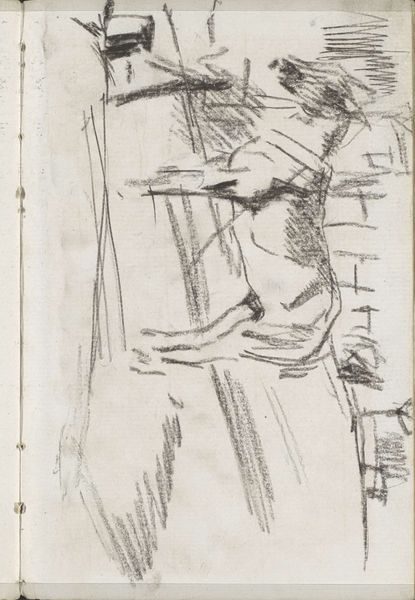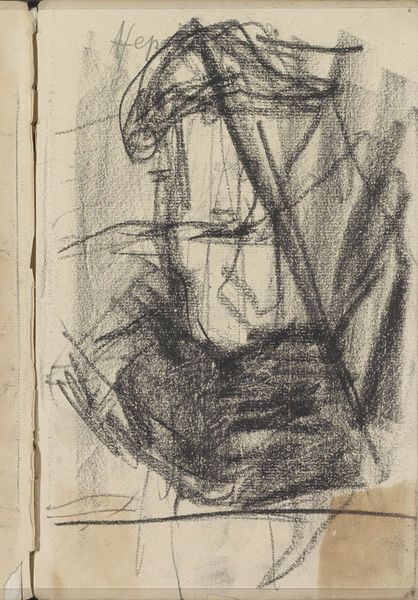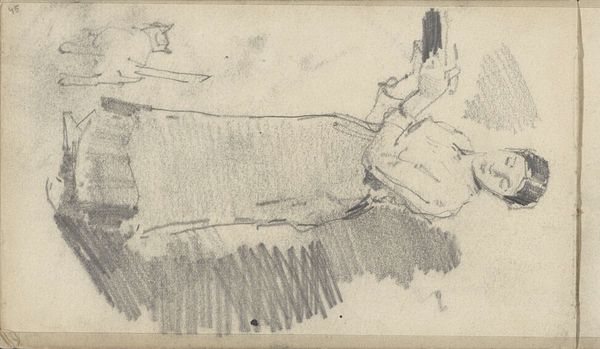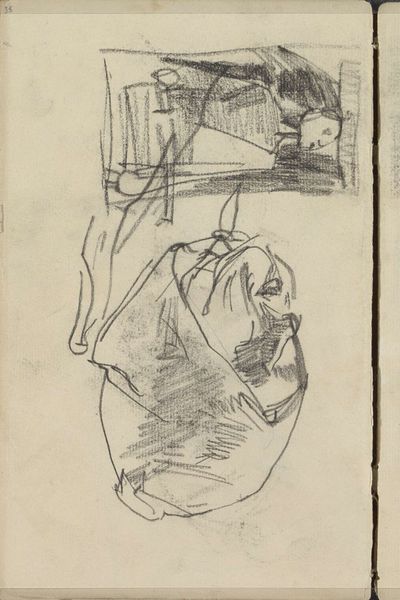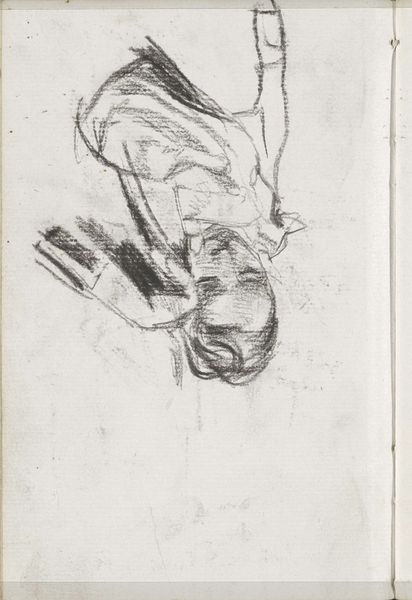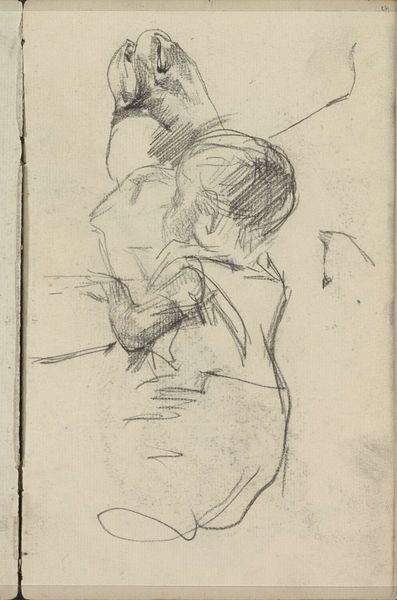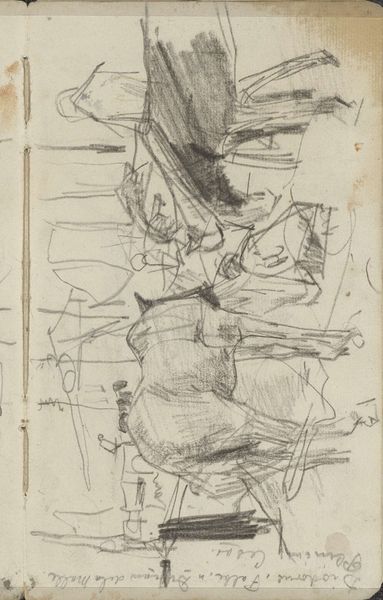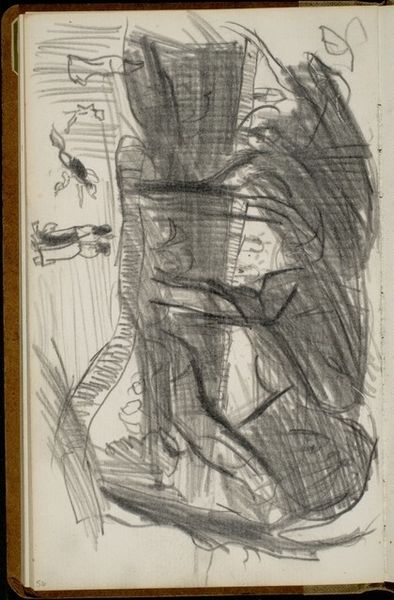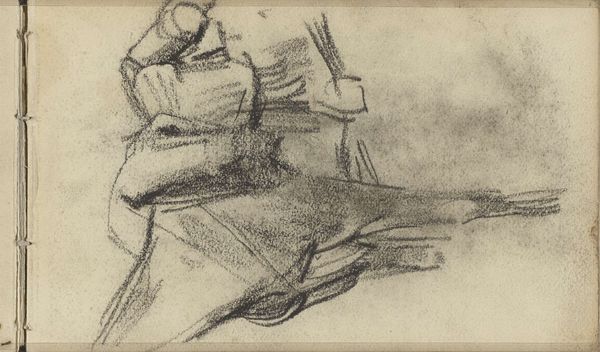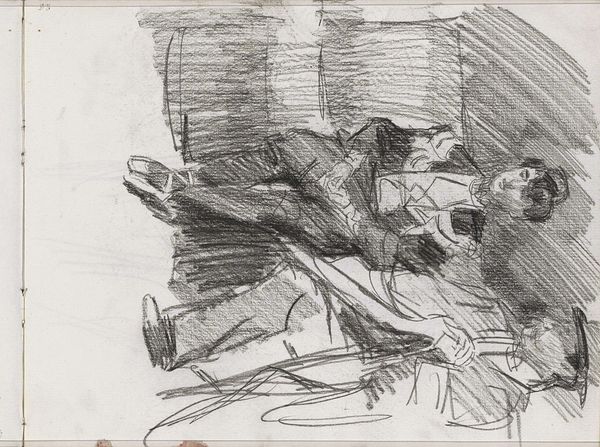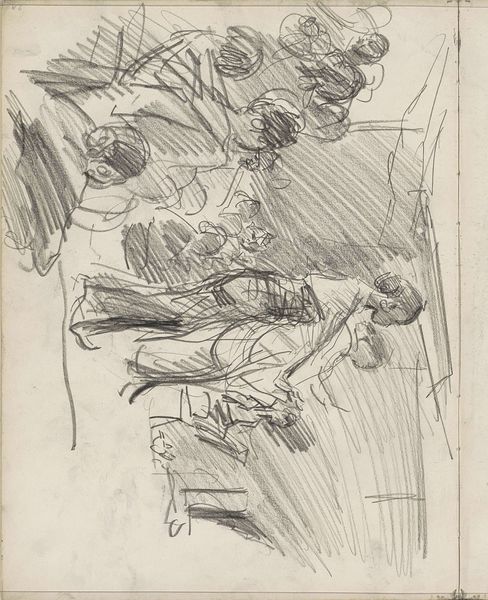
drawing, pencil
#
drawing
#
amateur sketch
#
toned paper
#
light pencil work
#
impressionism
#
pencil sketch
#
sketch book
#
landscape
#
figuration
#
personal sketchbook
#
sketchwork
#
pen-ink sketch
#
pencil
#
sketchbook drawing
#
sketchbook art
Copyright: Rijks Museum: Open Domain
Editor: So, this drawing, “Zittende figuren,” or "Seated Figures," by George Hendrik Breitner, was done around 1883 to 1885. It looks like it's pencil on paper, and has this immediate sketch-like quality, quite raw. What catches your eye about this piece? Curator: For me, it's the very unfinished quality, as you pointed out, that is incredibly powerful. Breitner was working in Amsterdam at a time of enormous social upheaval, and this sketch offers a glimpse into the lives often ignored or romanticized in academic painting. Editor: How so? It's hard to decipher exactly what’s going on. Curator: Exactly! It resists easy consumption. The lack of detail forces us to consider what we bring to the image. Are they workers, resting from some labor? Are they sex workers, waiting for clients? Are they simply poor people? By not clarifying, Breitner confronts the viewer's own assumptions and biases. Think about how the portrayal of marginalized figures impacts and reflects broader social justice movements. Do you see the interplay between visibility and vulnerability in this work? Editor: I see what you mean. It is definitely not a posed portrait, it feels like a candid glimpse, perhaps of people experiencing some sort of precarity. I guess I expected something more…finished? Curator: And what does "finished" mean in this context? Breitner's choice to leave it unfinished makes it a modern work of art, focused on a real experience and confronting societal inequalities of the time, not just a prettified image. What is resolved versus unresolved and what this potentially means for the interpretation of gender and identity are points of focus. Editor: I hadn’t thought of it that way before. It's not just about what's *in* the drawing, but also what is *not* there. I'll definitely keep that in mind moving forward. Curator: Precisely. And it makes us think critically about representation, about who gets seen and how, even in the art world today.
Comments
No comments
Be the first to comment and join the conversation on the ultimate creative platform.

